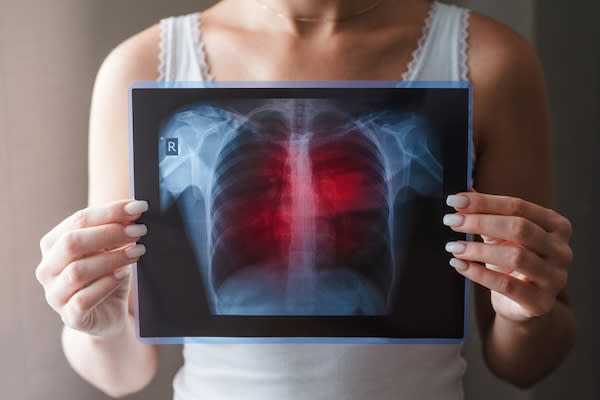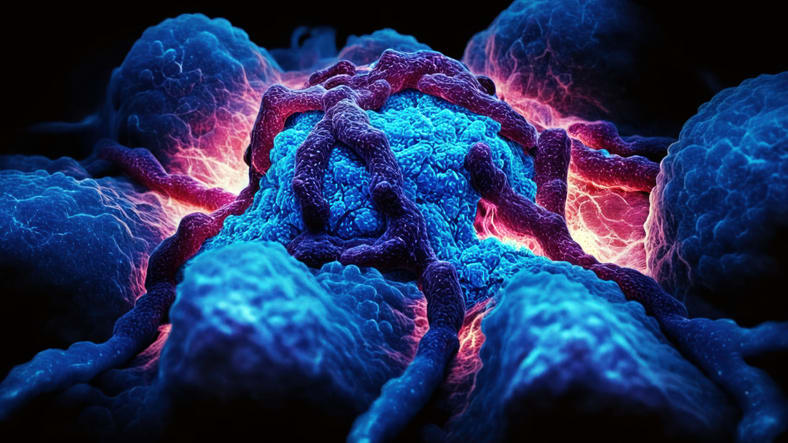Robotic Lung Resection
Surgical Innovation That Supports Your Recovery
Surgery is the gold standard when treating lung cancer, but traditional surgery can leave large incisions and result in a long recovery time. The Providence Swedish Cancer Institute’s expert surgeons offer a minimally invasive surgery alternative: robotic lung resection. This advanced procedure can help you heal faster so you can return to your regular activities sooner.

Treatment Overview
During robotic lung resection, our surgeons use robotic technology to see inside your lung and remove part of it without making a large incision.
Once you are under general anesthesia, your surgeon will make a few small incisions between your ribs and insert a camera and instruments. The camera provides high-definition, magnified images on a nearby console, where your surgeon controls the instruments with precision. Nearby lymph nodes may also be removed if needed.
Once the procedure is complete, your surgeon might insert a flexible tube into your chest cavity to remove air so your lungs can re-expand or to remove fluid. Typically, it’s removed within 12 hours of your surgery, but your care team will explain to you how long yours will stay.
Because it’s minimally invasive, a robotic lung resection usually means less pain and faster recovery.
What to Expect
At the Providence Swedish Cancer Institute, we’ll guide you through the planning stages of your robotic lung resection through to discharge, recovery, and future treatment if needed. Your care team is here to support your physical healing, emotional well-being, and personal goals, so you can move forward with confidence.
About a week before surgery, we'll schedule a pre-admission visit to:
- Assist with any remaining pre-surgical lab work or tests
- Review what will happen during your surgery
- Explain potential side effects
- Discuss medications and post-surgery care, including in-home help or equipment if needed
You'll receive information to prepare for your hospital admission. If you have any questions after your pre-admission appointment, your nurse or care coordinator will be happy to help.
Expect to stay in the hospital for 1 to 4 days. Although overall recovery time from a robotic lung resection can take several weeks, you’ll likely start feeling better within 2 or 3 weeks, when you’ll be able to return to light activities. Before you leave, your care team will show you how to do deep breathing exercises to help expand your lungs and prevent possible complications. You’ll also learn what to avoid, like strenuous activity or heavy lifting, until your surgeon says it’s safe.
Minimally invasive procedures have many benefits over traditional surgery. Aside from there being less scarring due to the small incisions, there’s a lower risk of complications, like infection and bleeding. In addition, robotic lung resection can be safer for some people who have lung diseases, like chronic obstructive pulmonary disease (COPD), or other chronic health conditions. Being able to return to your usual activities faster can also help contribute to better overall health.
As with any surgery, there are risks, including:
- Infection
- Bleeding
- Blood clots
- Difficulty breathing
- Air leaking into the chest cavity
- Injury to the airway
Your care team will talk with you about these risks, answer your questions, and help you make an informed decision that aligns with your goals.
You’ll have several follow-up appointments after your procedure for the first few weeks. This helps us monitor your healing and manage any complications. As time goes on, your appointments will be less frequent, but regular checkups are required so that we can continue to manage any of your ongoing treatment needs and watch for any signs of recurrence.
Services are also available to help you through every treatment stage.
Learn more about our supportive care services.
Frequently Asked Questions
Not everyone can have robotic lung resection, but it has several benefits over traditional surgery for those who can have it. Because it’s minimally invasive, there are fewer incisions, and recovery is usually faster. There’s less scarring and a lower risk of complications like infection and bleeding. It might also be a better option for people with other health issues that might make traditional surgery a bit riskier.
How much of the lung your surgeon removes depends on where the tumor is, its size, and how much of your lung is affected. It can be just one small segment of one lobe (segmentectomy), an entire lobe (lobectomy), or, less commonly, the whole lung (pneumonectomy) on the affected side. Your surgeon’s goal is to remove the tumor and affected tissue while leaving you with as much healthy lung tissue as possible.
It’s common to have a chest tube after robotic lung surgery. When part of the lung is removed, air can sometimes leak into the chest, causing a condition called pneumothorax. The chest tube helps remove that air and keeps your lung properly inflated. It can also drain any fluid that may build up after surgery.
In rare cases, a patient may go home with a chest tube still in place. If that happens, your care team will show you exactly how to take care of it and make sure you feel comfortable managing it at home.
It’s normal to feel shorter of breath than you expected after lung surgery. Your care team will guide you through deep breathing exercises and encourage you to move around to help rebuild your strength. You may also need oxygen for a while during recovery.
The amount of lung tissue removed will affect how your breathing feels. As your body adjusts to having less lung volume, you’ll likely notice improvement over time. You may still feel shorter of breath during strenuous activities, but many patients find they’re able to return to their usual routines with some patience and support.
While your surgeon plans to use a robotic approach, there’s a small chance the procedure may need to switch to traditional surgery once it begins. This is rare — especially at high-volume centers like the Providence Swedish Cancer Institute, where these procedures are done regularly.
A switch might be needed if there’s more bleeding than expected, scar tissue from previous procedures, or if the tumor is in a difficult-to-reach area. If that happens, your surgeon will continue using the safest and most effective method to treat you.
The sooner you can stop smoking before your surgery, the better. Smoking restricts blood flow through your blood vessels, making it hard for your tissues to get enough oxygen and nutrients to heal. Quitting smoking also improves your lung function – how well your lungs actually work.
It’s never too late to stop, even if your surgery is coming up soon. Quitting just 4 weeks before your surgery cuts the risk of complications by 23%. Stopping 8 weeks cuts that to even more – almost 50%.
We provide a full range of supportive care services to support you during and after your cancer treatment. Some of these services include:
- Art therapists
- Cancer rehabilitation (onco-physiatry)
- Care coordinators
- Genetic counseling (cancer geneticist)
- Health educators
- Medical massage (edema, lymphedema management)
- Music therapist
- Naturopaths
- Nutritionists
- Oncology nurses
- Social workers
- Speech and language pathology
We can also help with finances, food, transportation, and other challenges for eligible patients through our patient assistance fund.
See the full list of supportive care services.
Note: Some services are provided by local partners and vary based on location. Please contact your clinic for more information.
News & Info From Our Experts



